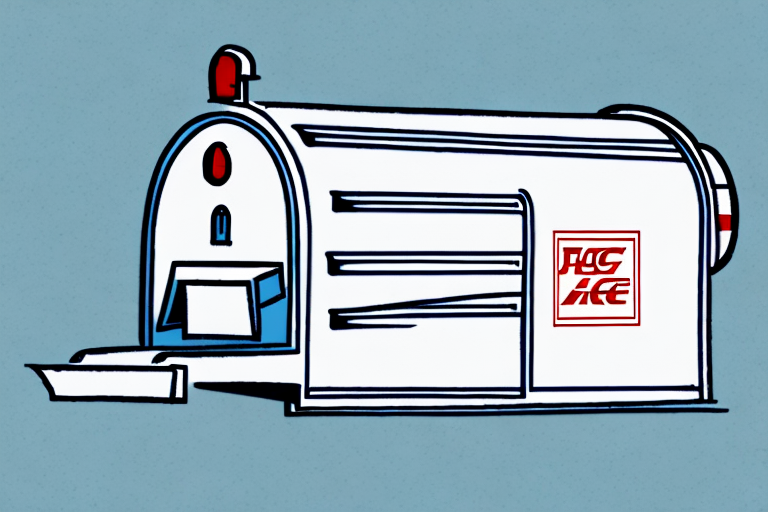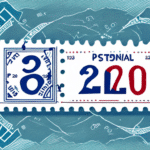When it comes to sending mail with the United States Postal Service (USPS), various factors can impact the cost of your postage. In this comprehensive guide, we'll cover everything you need to know about USPS mail classes, postage rates, and how to calculate the cost of sending your mail. We'll also provide tips for reducing your postage costs, as well as information on additional fees and surcharges, international shipping costs, and special USPS services.
USPS Mail Classes and Postage Rates
Domestic Mail Classes
The USPS offers several domestic mail classes, each tailored to different types of mail and delivery speeds. The most common mail classes include:
- First-Class Mail - Typically used for letters and small packages weighing up to 13 ounces, with delivery within 1-3 business days.
- Priority Mail - Ideal for larger packages and offers 1-3 business day delivery within the US.
- Priority Mail Express - Provides guaranteed overnight delivery within the US.
- Media Mail - Used for shipping books, CDs, and DVDs, with delivery within 2-8 days.
- Parcel Select - Best suited for large packages that don't need to arrive quickly, with delivery within 2-8 days.
- USPS Retail Ground - A cost-effective option for shipping large and heavy packages that don't require fast delivery, with delivery within 2-8 business days.
Choosing the correct mail class ensures your package arrives in a timely manner and at the lowest possible cost. For more detailed information on each mail class, visit the USPS Mail Services page.
International Mail Classes
The USPS also offers international mail classes designed for shipping packages to over 190 countries. These include:
- First-Class Package International Service - Affordable option for small packages with delivery times varying by destination.
- Priority Mail International - Offers faster delivery times and tracking to many international destinations.
- Priority Mail Express International - Provides expedited delivery with a money-back guarantee to select countries.
Postage rates for international shipping vary based on weight, destination, and mail class. Detailed information can be found on the USPS International Shipping Services page.
Calculating and Optimizing Postage Costs
How to Calculate Postage Costs
To calculate postage costs for your mail, you'll need to know the weight of your package, its dimensions, and the delivery destination. The USPS provides a Postage Calculator on their website to help you determine the cost of your shipment based on these factors.
The type of mail service you choose will also affect the cost. For example, Priority Mail costs more than First-Class Mail but offers faster delivery. When sending mail internationally, additional customs forms and fees may apply, so it's essential to research your options and choose the best mail service for your needs.
Tips for Reducing Postage Costs
- Use the Correct Mail Class: Ensure you're selecting the most appropriate mail class for your package to benefit from the lowest possible rates.
- Utilize Flat Rate Options: For standard-sized items, flat rate boxes and envelopes can offer significant savings, regardless of the package weight.
- Print Postage Online: Ordering and printing postage through the USPS website or authorized online platforms can provide discounts compared to retail rates.
- Consolidate Shipments: Combining multiple shipments into a single package can reduce overall postage costs.
Saving on Bulk Mailings
If you regularly send large volumes of mail, the USPS offers bulk mail rates that can help you save money on postage costs. To qualify for these rates, you'll need to meet specific requirements, such as sending a minimum number of pieces and adhering to size and weight guidelines. Additionally, the Every Door Direct Mail (EDDM) service allows you to target specific neighborhoods without needing a mailing list, offering lower postage rates and maximum exposure for your business. More information can be found on the USPS EDDM page.
Additional Fees and Surcharges
Understanding Additional Fees
Beyond standard postage rates, the USPS may impose additional fees and surcharges for various services. These can include:
- Oversize or Non-Standard Package Fees: Extra charges for packages that exceed size or weight limits.
- Destination Surcharges: Additional fees for shipping to remote areas or during peak holiday periods.
- Registered Mail Fee: Provides added security for valuable or sensitive items and requires the recipient's signature upon delivery.
- Address Correction Fee: Charged if the recipient's address is incorrect or incomplete.
Services like Priority Mail Express may include certain fees and surcharges in their pricing, such as a money-back guarantee for specific delivery delays. It's crucial to review these fees on the USPS Pricing & Services page before sending your mail to avoid unexpected costs.
Impact of Delivery Speed on Postage Costs
The delivery speed you choose significantly affects postage costs. Faster delivery options like Priority Mail Express are more expensive but offer guaranteed delivery times, which is essential for time-sensitive packages. Conversely, slower options like Media Mail or USPS Retail Ground are more cost-effective but have longer delivery times.
Additionally, the weight and size of your mail can influence costs. Heavier and larger items generally incur higher postage fees regardless of the delivery speed selected. Balancing urgency with cost-effectiveness is key to optimizing your postage expenses.
Common Mistakes to Avoid
When calculating postage costs, avoid the following common mistakes:
- Misjudging Weight or Dimensions: Ensure your package is accurately weighed and measured to prevent underpayment or overpayment.
- Overlooking Additional Fees: Always account for possible extra charges related to package size, destination, or special services.
- Selecting the Wrong Mail Class: Choosing an inappropriate mail class can lead to higher costs or delayed deliveries.
Review your shipment details carefully before finalizing postage to minimize errors and additional costs.
USPS vs. Other Carriers
Comparing USPS with FedEx and UPS
The USPS often offers more affordable shipping rates than competitors like FedEx and UPS for packages weighing under 2 pounds. However, for larger or heavier packages, private carriers may provide more cost-effective solutions. Additionally, while USPS may have lower rates for smaller packages, their delivery times might be longer compared to the expedited services offered by FedEx and UPS.
Private carriers like FedEx and UPS also offer advanced tracking and delivery notifications, which can provide greater visibility into the status of your shipments. Depending on your specific needs—such as delivery speed, package size, and tracking requirements—you may find one carrier more suitable than the others.
For a detailed comparison of shipping rates and services, visit the Compare Shipping Rates website.
International Shipping with USPS
International Shipping Costs
USPS provides international shipping services to over 190 countries, with costs based on package weight, destination, and chosen mail class. For example, sending a 1-pound package via Priority Mail International typically starts around $35, whereas First-Class Package International Service may cost less but offer more limited tracking.
To get an accurate estimate for your international shipment, use the USPS Postage Calculator.
Customs Fees and Regulations
International shipments are subject to customs fees and import taxes, which vary depending on the destination country and the value of the package. These fees are the responsibility of the recipient. It's advisable to research the customs regulations of the destination country before shipping to ensure compliance and avoid unexpected costs.
Additionally, USPS offers options for tracking and insurance on international shipments, providing peace of mind and protection during transit. More details can be found on the USPS International Shipping Services page.
Tracking and Special USPS Services
How to Track Your Mail Delivery
The USPS offers various tracking options to monitor the status of your package throughout the shipping process. You can track your package using its tracking number on the USPS Tracking page. Additionally, you can sign up for email or text notifications to receive updates on your package's delivery status.
Advanced tracking features may be available for certain mail classes and services, providing real-time updates and delivery confirmations.
Special Services Offered by USPS
The USPS provides a range of special services to ensure your package arrives safely and securely. Some of these services include:
- Certified Mail: Offers proof of mailing and delivery, including a receipt and tracking information.
- Registered Mail: Provides the highest level of security for valuable or sensitive items, with added insurance options.
- Delivery Confirmation: Allows you to confirm that a package has been delivered to its destination.
- Signature Confirmation: Requires the recipient's signature upon delivery, ensuring that the package reaches the intended individual.
For more information on special services, visit the USPS Special Services page.
Online Tools and Purchasing Postage
How to Purchase and Print Postage Online
The USPS offers a variety of online tools that allow you to purchase and print postage from the convenience of your home or office. To access these tools:
- Create an Account: Sign up for an account on the USPS website.
- Use Online Platforms: Utilize platforms like Click-N-Ship to print shipping labels and purchase postage.
- Have a Digital Scale: Accurately weigh your packages to ensure correct postage.
Printing postage online can save time and often provides discounts compared to purchasing postage at retail locations.
Pros and Cons of Using USPS for Your Shipping Needs
Advantages of Using USPS
- Affordable Rates: USPS often provides competitive pricing, especially for smaller and lightweight packages.
- Reliable Delivery Times: With various mail classes, you can choose the delivery speed that best fits your needs.
- Nationwide Coverage: USPS delivers to every address in the United States, including remote and rural areas.
Disadvantages of Using USPS
- Limited Tracking Options: Some mail classes offer basic tracking, while others provide more detailed tracking information.
- Slower Delivery for Certain Classes: Economy options like Media Mail or Retail Ground have longer delivery times compared to expedited services from private carriers.
- Additional Fees: Extra services and surcharges can increase overall shipping costs.
Overall, understanding the cost of sending mail with USPS involves considering multiple factors such as mail classes, postage rates, delivery speeds, and additional fees. By following the tips outlined in this comprehensive guide, you can ensure your mail arrives on time and at the lowest possible cost.






















